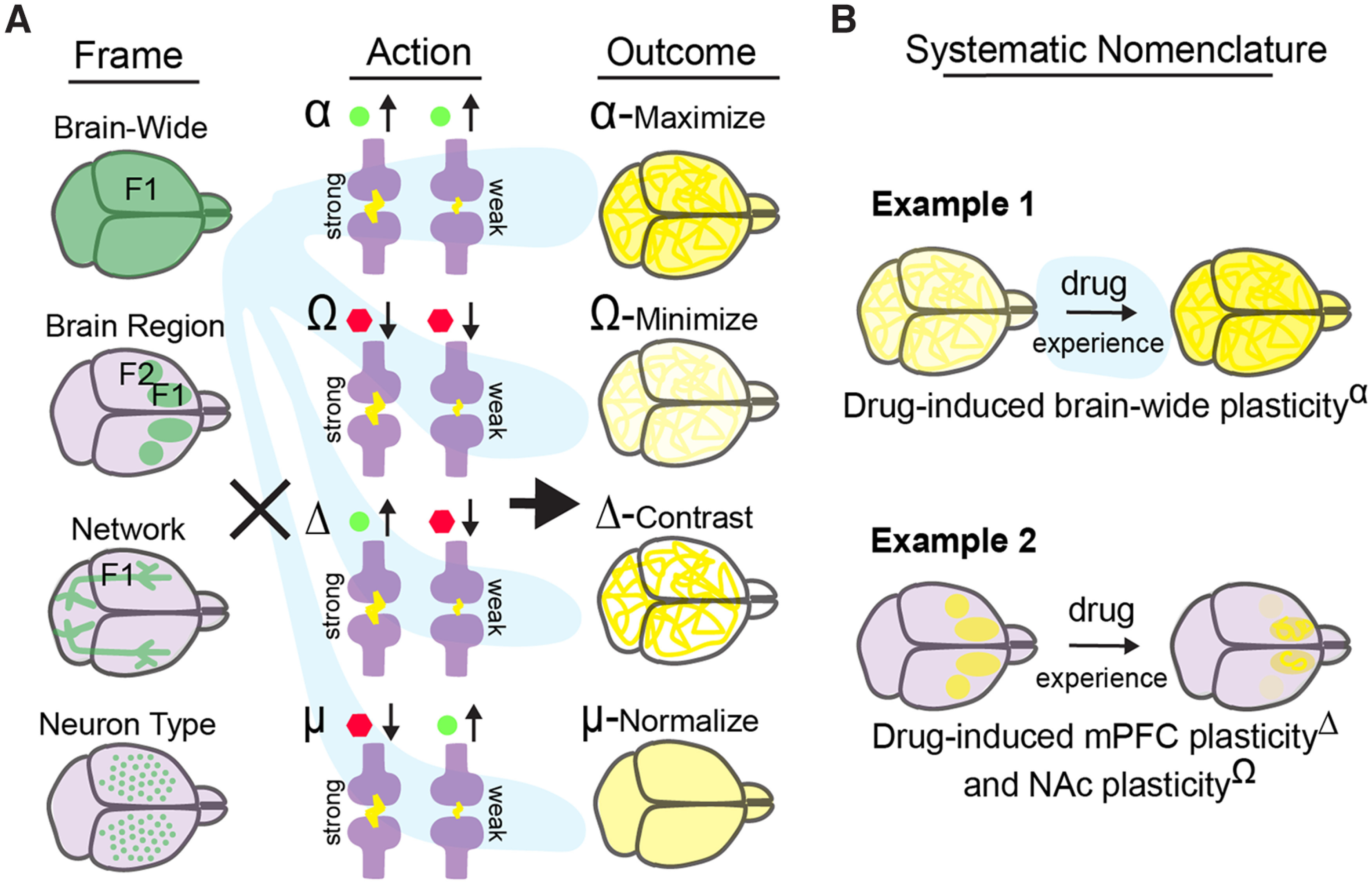Figure 3.

Models of neuroplasticity. A, While various terms have been used to describe neuroplasticity in the brain (i.e., Hebbian plasticity, homeostatic plasticity, hyperplasticity, and others), there is an ongoing deficiency in the field for clearly communicating aspects of these processes meaningfully. Here we propose the use of four actions of neuroplasticity (α, Ω, Δ, and μ) within a particular frame of action (brain-wide, brain region, network, neurons, etc.) to communicate outcomes (maximize, minimize, contrast, normalize) for paths of activity in the brain. Experience modifies the nature of the outcomes. B, Examples of the use of a systematic nomenclature for describing neuroplasticity in the brain. Other examples (not shown) are “Drug induced plasticityΔ in active networks” and “Time-delayed plasticityμ in inhibitory neurons.”
